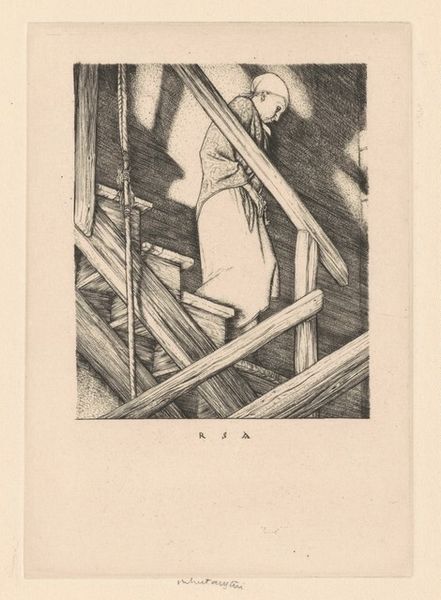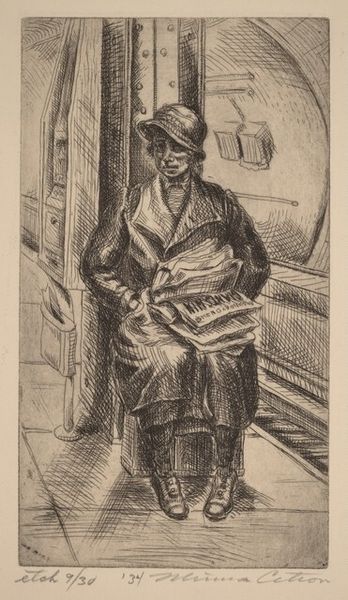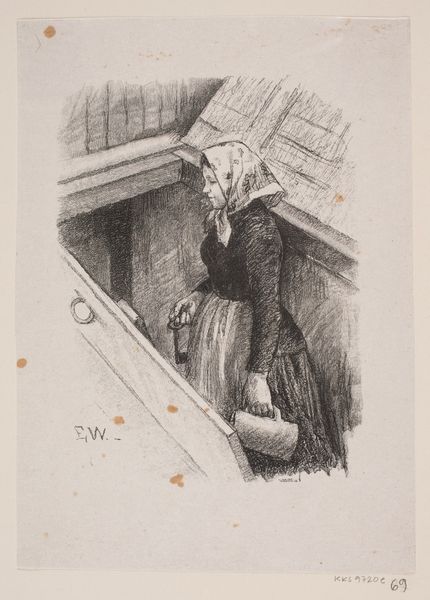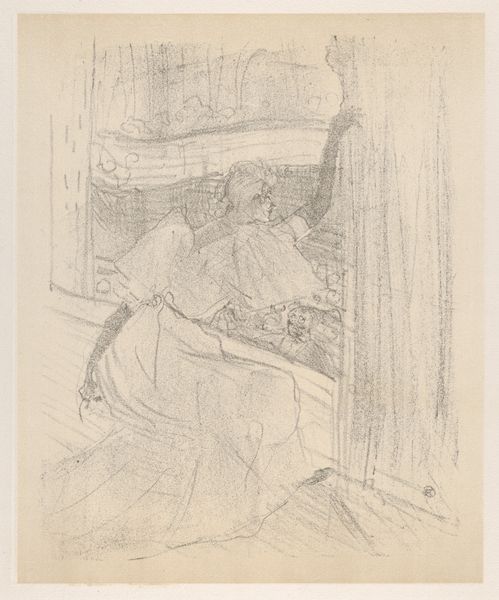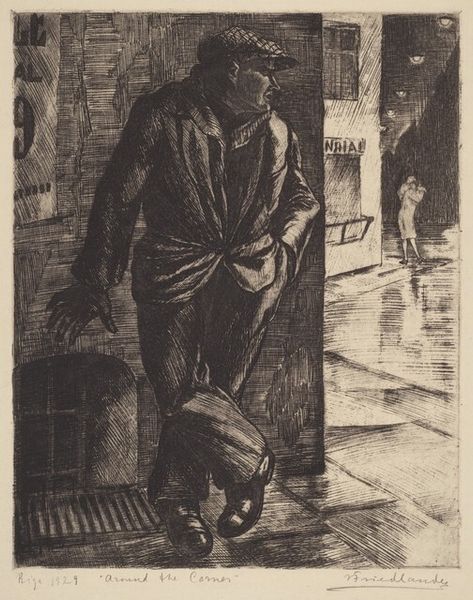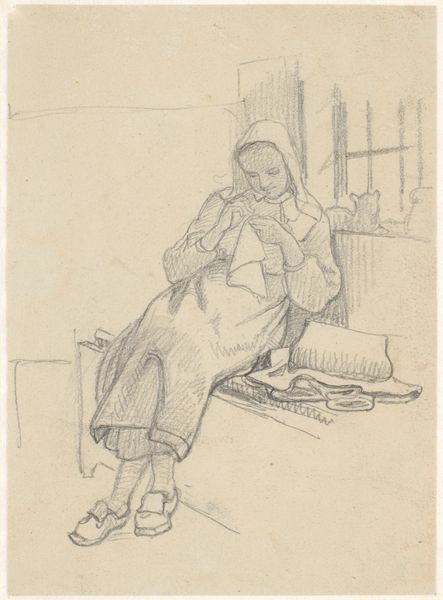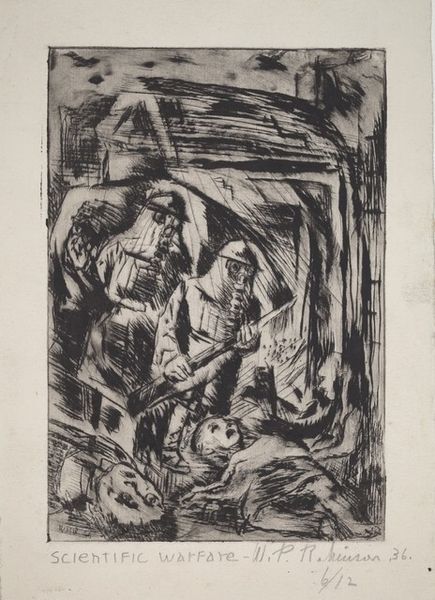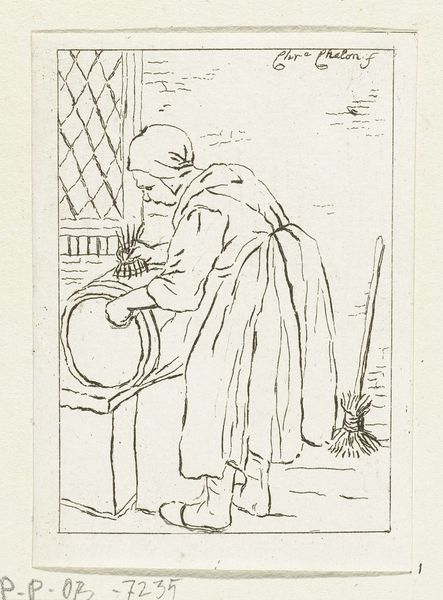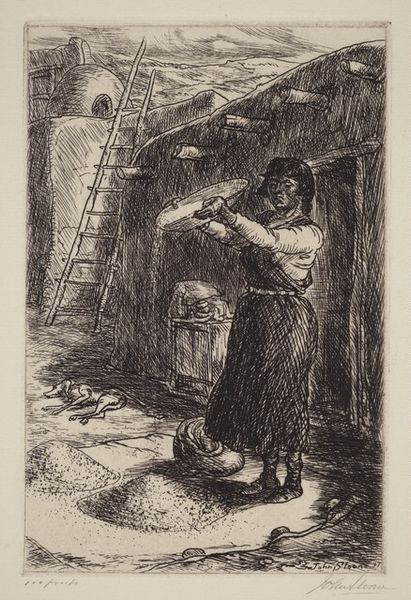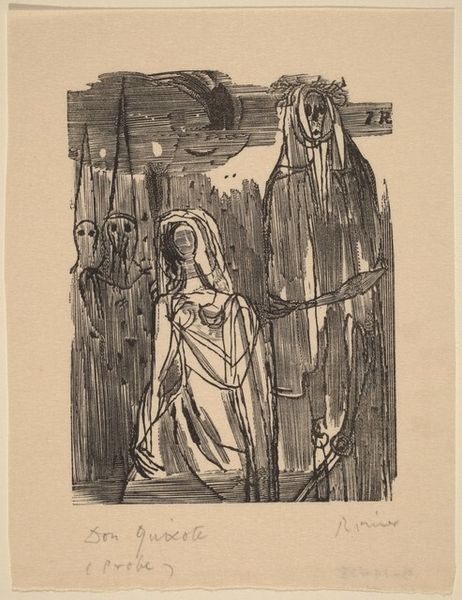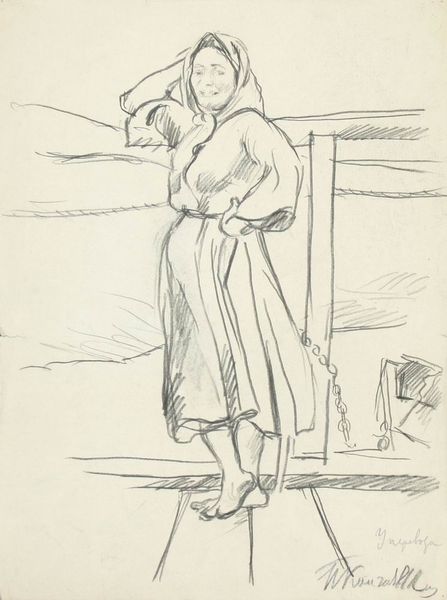
drawing, print, etching, ink
#
portrait
#
drawing
#
ink drawing
# print
#
etching
#
landscape
#
figuration
#
ink
#
realism
Dimensions: plate: 15.6 x 10.4 cm (6 1/8 x 4 1/8 in.) sheet: 26.4 x 20.9 cm (10 3/8 x 8 1/4 in.)
Copyright: National Gallery of Art: CC0 1.0
Curator: Robert Austin created this etching, "Girl by a Gate," in 1938. It’s rendered in a very fine, almost delicate, style. Editor: My first impression is melancholy. She seems burdened, somehow, leaning heavily against the gate. It's a beautiful but wistful image. Curator: The gate itself, though seemingly simple, is quite important. Gates and thresholds in art are often laden with symbolic meaning. They can signify transitions, choices, and even societal boundaries. Given that it was produced in 1938, one can't help but view the motif with consideration for the looming socio-political tensions that would become a second world war. Editor: Absolutely. The placement of the hat, dangling loosely in her hand, could signify the relinquishing of traditional roles, a discarding of expectations. The lines of the landscape lead the eye directly to her, and she’s centrally framed—a figure caught between worlds. I am interested to interpret the ladder to the side. Perhaps there is something about ascendance indicated here? Curator: I agree, her posture definitely communicates that ambivalence. There’s a quiet resistance there too; a female figure in what appears to be a liminal space – literally, perhaps a comment on restricted societal roles, and metaphorically, a turning point for women, and the tensions therein, perhaps during a time of national crisis. I like that you picked up on ascendance in that ladder. Austin seemed to favour clean, etched lines, creating both realism and subtle surrealism within this. Editor: Her very presence there, leaning against that rustic gate, brings together themes of vulnerability and resilience. She's on the verge of something. Do you feel that she holds any power here? The power of possibility? The power of reflection? Curator: She’s undoubtedly on the cusp, embodying both power and precarity, reflecting the broader landscape of women’s rights during that era, as much as today. The image invites a broader interpretation within discourses around labour, migration, and citizenship. I think what Austin has managed to produce here, in this drawing, is truly iconic. Editor: Ultimately, Austin leaves us contemplating this moment. Thank you, that gave me plenty to think about.
Comments
No comments
Be the first to comment and join the conversation on the ultimate creative platform.

